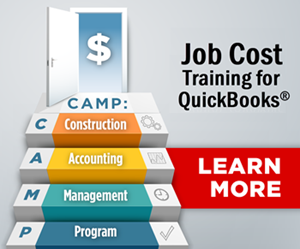What might you be able to accomplish for your company if you create employer or employee shadowing teams for a couple of hours? Or even a couple of days?
Employer or Employee Job Shadowing – Could It Work For YOUR Company?
 A client recently told me that she wasn’t as pleased with the performance of a couple of employees as she would like, so she decided to periodically sit in with them for a few hours at a time as they performed their jobs. The idea wasn’t to critique their activities, but to learn more about WHY things weren’t working as smoothly as desired.
A client recently told me that she wasn’t as pleased with the performance of a couple of employees as she would like, so she decided to periodically sit in with them for a few hours at a time as they performed their jobs. The idea wasn’t to critique their activities, but to learn more about WHY things weren’t working as smoothly as desired.
She also volunteered to help them with what they were doing as she joined them. That gave her some hands-on experience actually doing some specific parts of their job. We discussed what she discovered, and also brainstormed together to come up with a few additional ideas. The benefits seemed to be substantial – so I decided to spend a bit of time to list them and add a few more thoughts and ideas.
What is Job Shadowing?
Job shadowing is a type of on-the-job training in which an individual follows and observes a seasoned professional throughout their typical workday. This experience allows the individual to gain a better understanding of a specific job role, its duties, and the necessary skills and behaviors.
In addition, job shadowing allows for coaching to occur, observation of the challenges associated with that job, and identification of potential improvements.
There are several team/shadowing possibilities that you could try:
- The business owner tags along with an employee (and helps)
- An employee tags along with the business owner (and helps)
- One employee tags along with another employee (and helps)
Benefits of Job Shadowing
For the listing below, I’ll refer to the person tagging along as the ‘Shadow,’ and the person being shadowed as the ’employee or business owner.’
-
 The Shadow will discover what his/her co-worker really does all day long!
The Shadow will discover what his/her co-worker really does all day long!
This provides the Shadow with a deeper appreciation for what the other employee or business owner faces, problem-solves, and handles, on a day-to-day basis.
-
The Shadow gets a bit of cross-training about the most critical aspects of the employee or business owner’s job.
If the employee is terminated or leaves the company, or the business owner or employee becomes ill or is on vacation, the Shadow will have (at least basic) insights regarding any critical tasks that need to be addressed!
- Backup Creation “Disaster Recovery”?
Most employees are NOT so critical to the company’s operation that it would create a disaster if they suddenly encountered that fantasy bus (the one that’s waiting to hit all of us unsuspecting souls!).
But, especially for key employees, it never hurts to know what you’d do in an unanticipated “they aren’t available” scenario. This is a good time to think about coming up with a “Top Priorities and What Needs To Be Done Right Away!” list for those employees.
-
Job shadowing creates perspective
As a Shadow, you’ll bring a unique, independent perspective with you. You may be able to spot easier, better, more efficient ways to do things.
…
TIP: Before assuming that you’ve come up with a better solution, try to understand how and why current processes are followed. THEN if you believe you have an idea for a better approach, jot it down for further thought and discussion…
-
Deeper understanding of issues
By “tagging along” as a Shadow, you may be able to gain a deeper understanding of problems you might otherwise overlook. Examples of issues that may come to light include:
-
- Lack of resources (e.g., tools or equipment, information, procedures, or needed repairs)
- Continual work interruptions
- Mis-communication between employees
- Interpersonal tension
- Dis-organization
- Outdated procedures
- Problems with assigned “Accountability vs. Responsibility”
- “Catch 22” situations (generally speaking “Catch 22” means that no matter which path is chosen, failure is guaranteed).
-
Identification of underlying issues
If an employee is evasive or resentful about openly sharing information, it’s an indication that you need to dig deeper. Are there other underlying issues that should be looked into?
Please remember that fraud is always perpetrated by trusted employees. The loss is typically discovered when they get ill, or someone else steps in to do their work. Don’t hesitate to investigate further if anything looks or sounds questionable or just doesn’t “feel right.”
-
 Process improvements
Process improvements
As a Shadow, if you act as an observer and helper, employees will (in most cases) be glad to share the value of what they do – and how it contributes to the company’s success. And, if you ask, they’ll usually volunteer ideas about how company operations or internal processes could improve.
-
Refine expectations
I once read that management’s concept of what they want from an employee and an employee’s concept of what management wants them to do can be completely different. This is a great time to compare expectations!
-
Teamwork creation
Employer and Employee Shadowing can create a more cohesive team:
-
-
- Use your Employee Shadowing information to look at the structure of the team. You may spot duplication of efforts or discover that certain inter-department activities are being missed or overlooked.
- “Sense of Teamwork” can be greatly enhanced when individuals learn more about each other. Work involves a huge part of our time and emotional life. Taking the time to build understanding and positive relationships can make a big difference in company success.
-
Build a Stronger Company From Job Shadowing
Here are two final steps to help you build a stronger, more effective company using job shadowing:
First, you’ll likely want to create a short form listing the above concepts. Both the Shadow and employee or business owner can use the form as a way to organize their thoughts and ideas during, or shortly after, their “Mini-team” engagement.
Then, you’ll want to schedule a follow-up team meeting to constructively share impressions and insights. Good topics to add to the discussion could include “2 or 3 Ways We Found That We Can Support Each Other” as well as “2-3 Ideas We Discovered That Could Help the Company Run More Effectively, Efficiently, or Profitably.”
These two final steps should convert the time you’ve invested in your Employer & Employee Shadowing program into both major and minor company improvements.
An Employee Shadowing Story (Take Your Kid…)
 I remember a very old TV episode of “The Wonder Years.” It started out with Dad getting home from work, bursting through the back door, shedding his suit coat, ripping off his tie, and then settling into his easy chair with a scowl on his face. His son Kevin (played by Fred Savage) couldn’t figure out why his Dad came home in such a bad mood – or why, later in the evening, his Dad would spend time outside looking through a battered-up telescope.
I remember a very old TV episode of “The Wonder Years.” It started out with Dad getting home from work, bursting through the back door, shedding his suit coat, ripping off his tie, and then settling into his easy chair with a scowl on his face. His son Kevin (played by Fred Savage) couldn’t figure out why his Dad came home in such a bad mood – or why, later in the evening, his Dad would spend time outside looking through a battered-up telescope.
Then it was time for “Take Your Kid to Work” day. A and it was NOT a good day at the office! Things went from bad to worse, and the next thing you see is father and son arriving home from work with the same “shedding of the office routine.”
But this time, Dad’s explosion through the back door was immediately followed (and mirrored by!) Kevin’s. They experienced a workday together – and Kevin ended up with a far greater appreciation of what his Dad faced each day.
The bigger and happier outcome, however, was that because of their common experience, when Kevin saw his Dad looking through the telescope later that evening, his father shared that, as a young man, he wanted to be an astronaut. But then he gave up that dream in order to marry and have a family. He said he’d never regretted it for a moment, but after he’d had a tough day, he still loved to reconnect with that inspiration.
Another Job Shadowing Benefit
The part of this story that I especially wanted to share is this. Whenever we can create ways to work more closely together and problem-solve with a common goal, the more likely it is that we’ll gain a deeper understanding of each other’s problems and dreams. Ultimately, with that understanding, how we can more successfully succeed as a team within our companies.
LEARN MORE about our construction accounting and manufacturing program classes and discover our job-cost support products!
Customer Praise For Diane Gilson, Info Plus Accounting, and BuildYourNumbers.com
⭐⭐⭐⭐⭐ From the Intuit FindAProAdvisor website:
“We were a small build-to-inventory manufacturing company struggling with an inappropriate bookkeeping software program when we decided to convert to Quickbooks. Diane Gilson did an excellent job during installation and in follow-up – at a reasonable cost. Diane’s input was timely, not overwhelming and urged us forward when we needed a push. We continue to be very pleased with the results.”
See More Customer and Client Comments
At Info Plus, we offer a wide range of affordable workshops and training specific to job costing using software such as QuickBooks® desktop and Excel. We love teaching and coaching, so if you’re ready to learn, we’re here for you.
…

You can sign up for any of our workshops or training tutorials and learn what you need to know 24/7. If you’d like to learn more about the training, please send an email or call. We’ll be happy to explain how it works so you can decide if it would be a good fit for you and your business.
We look forward to hearing from you and learning more about how we can help…
